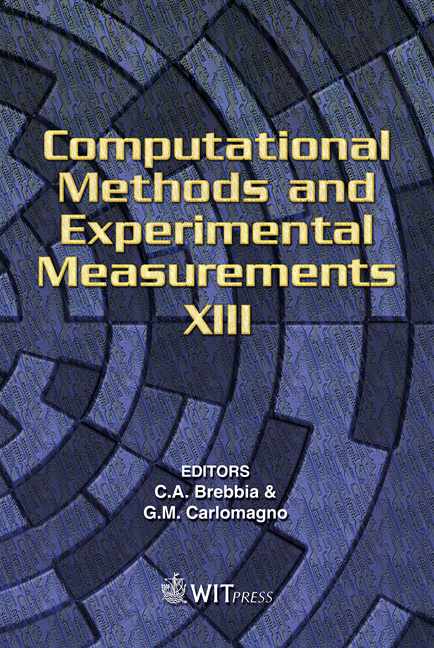Foam Flow Turn Influence On The In-line Tube Bundle Heat Transfer Intensity
Price
Free (open access)
Transaction
Volume
46
Pages
8
Published
2007
Size
380 kb
Paper DOI
10.2495/CMEM070461
Copyright
WIT Press
Author(s)
J. Gylys1, S. Sinkunas, T. Zdankus, V. Giedraitis & A. Balcius
Abstract
An experimental investigation of heat transfer from the tubes to the two-phase foam system was performed. Statically stable gas–liquid foam flow was used as a coolant. An investigation was performed on the experimental laboratory set-up consisting of the foam generator, an experimental channel and tube bundles. Two different geometries of in-line tube bundles were used for the experiments. Regularities of heat transfer of the tube bundles to the foam flow under the 180° degree turn were analysed in the work. The results of the investigation showed that heat transfer intensity is much higher than that for the one-phase airflow under the same conditions. The heat transfer character of frontal and further tubes to downward foam flow is different in comparison with the one-phase coolant flow. After the turn, local void fraction of the foam is less on the inner side of the foam flow. Therefore heat transfer intensity of the inner side-line tubes is higher than for other tubes of the bundle. The results of the investigation were generalized by criterion equations, which can be used for the calculation and design of the statically stable gas–liquid foam heat exchangers with the in-line tube bundles. Keywords: statically stable foam, foam flow, flow turn, heat transfer, in-line tube bundle. 1 Introduction One-phase coolants are usually used for heat and mass transfer processes in heat exchangers. Smaller coolant mass flow rate, relatively large heat transfer rate, low energy consumption required for coolant delivery to the heat transfer place
Keywords
statically stable foam, foam flow, flow turn, heat transfer, in-line tube bundle.





